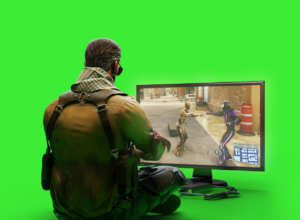…Gaming has come a long way since its humble beginnings in the 1970s. From the simple 8-bit consoles to the immersive virtual reality experiences of today, the evolution of gaming hardware has been truly remarkable.
1970s: The Birth of a New Industry
In the 1970s, the gaming industry was still in its infancy. The first computer games emerged, capturing the attention of early enthusiasts. One of the earliest examples was “Ticks and Zeros,” created by a graduate student in 1952 to explore the interaction between a person and a computer. However, it wasn’t until the 1970s that video games started gaining popularity.
1980s: The Rise of Home Consoles
The 1980s marked a turning point in the gaming industry. Home consoles started to gain traction, bringing video games into the living rooms of millions of households. The most iconic console of this era was the Nintendo Entertainment System (NES), which was released in 1985. It introduced 8-bit gaming to a wider audience and became a cultural phenomenon.
The NES, with its distinctive rectangular design and iconic controller, revolutionized the way we play games. It featured classics like “Super Mario Bros.” and “The Legend of Zelda,” which set the standard for future game design and storytelling. The 8-bit graphics and sound may seem primitive by today’s standards, but at the time, they were cutting-edge technology.
1990s: The Era of Advancements
The 1990s brought significant advancements in gaming hardware. Consoles became more powerful, allowing for more immersive gameplay experiences. One of the most notable developments was the release of the Sony PlayStation in 1994. It introduced 32-bit gaming and brought CD-based games to the mainstream.
With the PlayStation, game developers had more storage space to work with, allowing for more complex and visually stunning games. Titles like “Final Fantasy VII” and “Metal Gear Solid” showcased the potential of this new generation of gaming hardware. The introduction of game engines further revolutionized game development, making it more efficient and realistic.
2000s: The Rise of Online Gaming
The 2000s saw the rise of online gaming, which forever changed the way we play and interact with others. As internet connectivity became more widespread, multiplayer games gained immense popularity. Players could now compete against or cooperate with people from around the world, transcending geographical boundaries.
Online gaming allowed for a new level of competition and social interaction. Games like “World of Warcraft” and “Counter-Strike” became cultural phenomena, with millions of players logging in daily to explore virtual worlds and test their skills against others. The advancements in networking technology and server infrastructure made this level of connectivity possible.
2010s: The Era of Mobile Gaming
The 2010s brought another significant shift in gaming hardware: the rise of mobile gaming. With the advent of smartphones and tablets, gaming became more accessible than ever before. Mobile games offered quick and convenient entertainment on the go, appealing to a wide range of players.
Games like “Angry Birds” and “Candy Crush Saga” became global sensations, reaching millions of players worldwide. The touchscreen interface and accelerometer opened up new possibilities for gameplay mechanics, allowing for innovative and intuitive controls. Mobile gaming also embraced the freemium model, where games are free to play but offer in-app purchases for additional content.
The Future: Virtual Reality and Beyond
Looking to the future, the next frontier in gaming hardware is virtual reality (VR). In recent years, VR technology has made great strides in offering players a truly immersive gaming experience. Thanks to devices such as the Oculus Rift and HTC Vive, players can immerse themselves in virtual worlds and interact with them in a way never before seen.
Players can explore fantasy worlds, engage in epic battles, and solve challenging puzzles from the comfort of their own homes. The educational possibilities of virtual reality are also exciting, as it can provide students with hands-on experiences and simulations that enhance learning.
In addition to virtual reality, other emerging technologies such as augmented reality (AR) show promise for the future of gaming hardware. AR combines the virtual and real worlds by overlaying digital elements on our physical surroundings. Games like Pokemon Go have already demonstrated the potential of AR gaming, where players can catch virtual creatures in the real world.
Finally, the evolution of gaming hardware has been an amazing journey. From the simple 8-bit consoles of the past to the immersive virtual reality of today, gaming has constantly pushed the boundaries of technology. Looking ahead, the future of gaming hardware holds exciting possibilities, with virtual and augmented reality poised to revolutionize the way we play and enjoy games. So grab your controller or put on your virtual reality headset and get ready to embark on a gaming adventure like never before with the BRAZY team!










